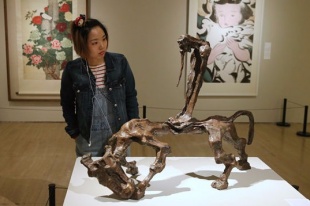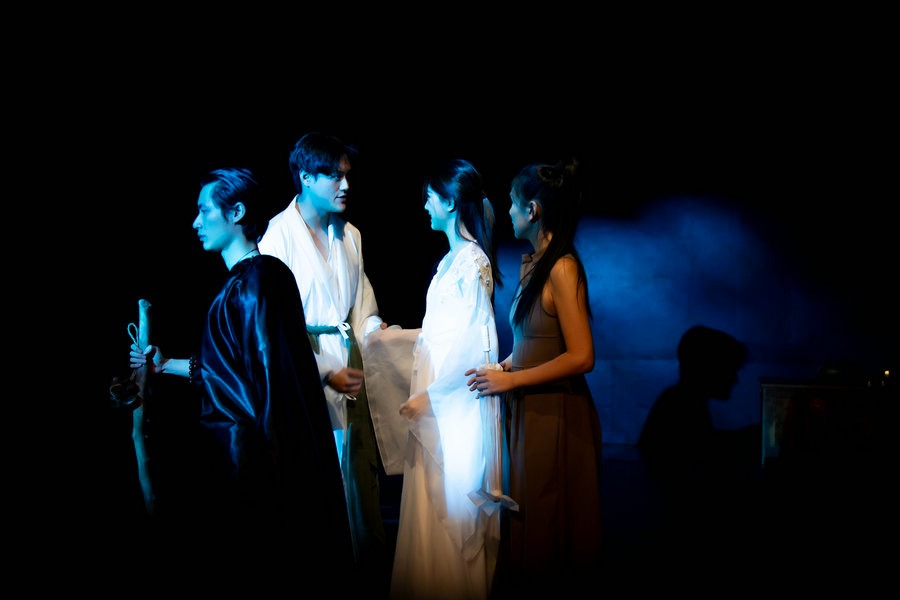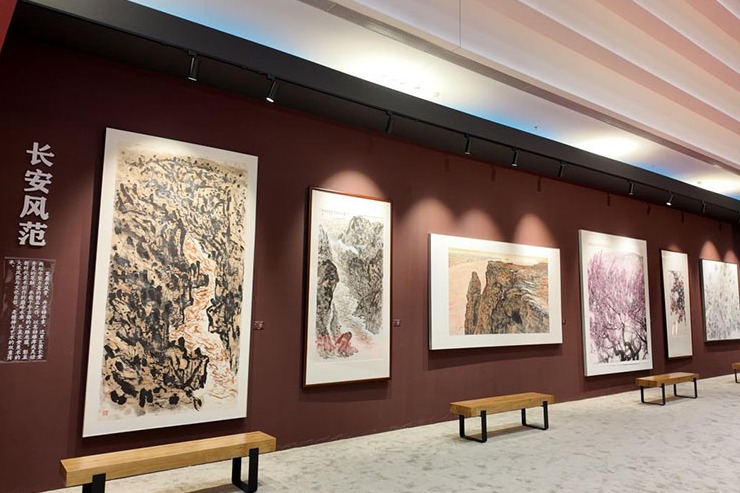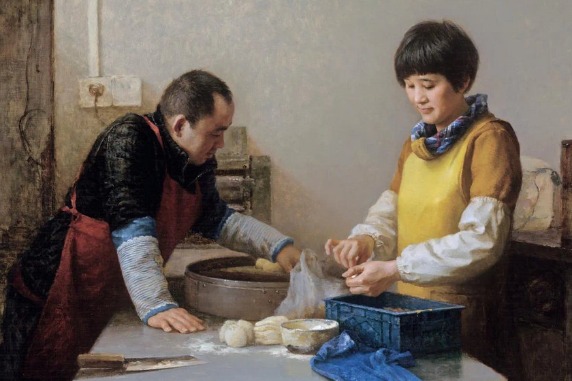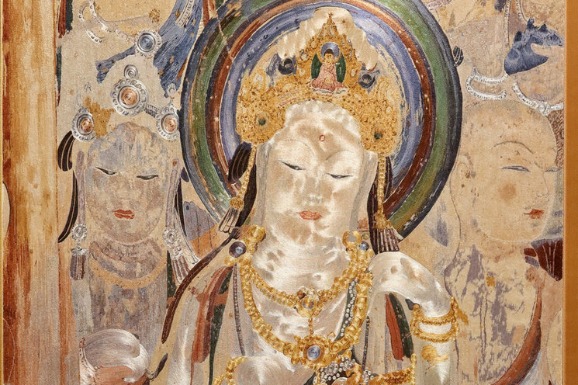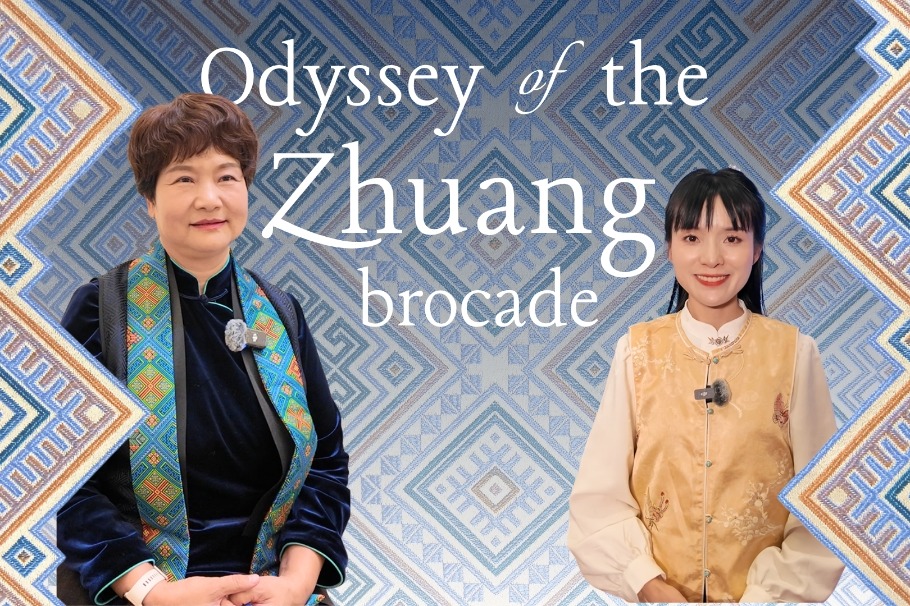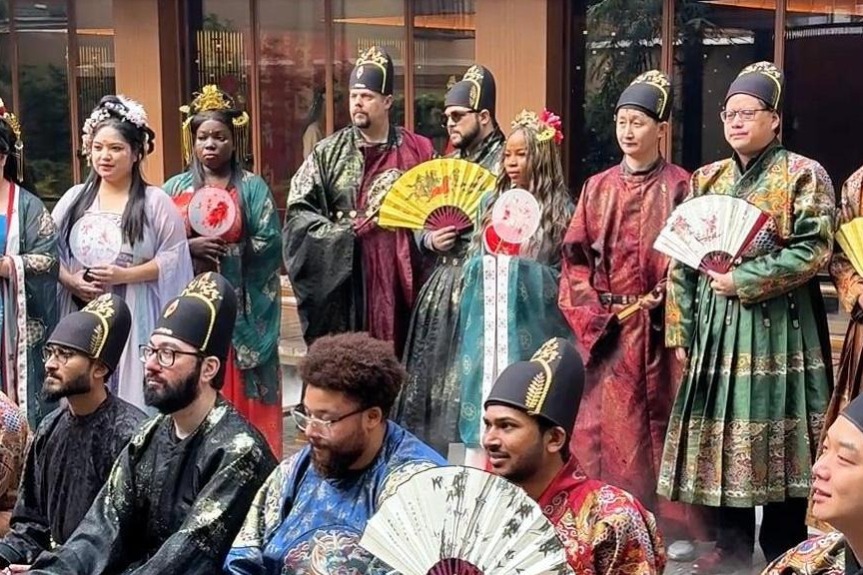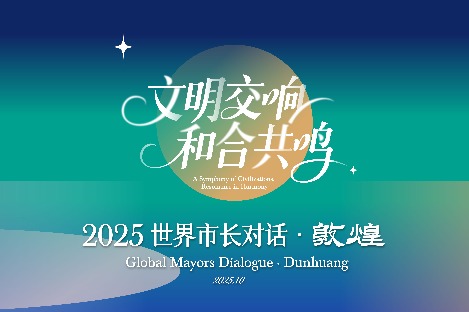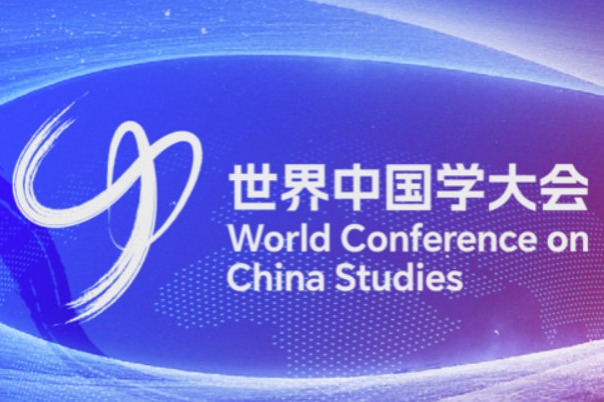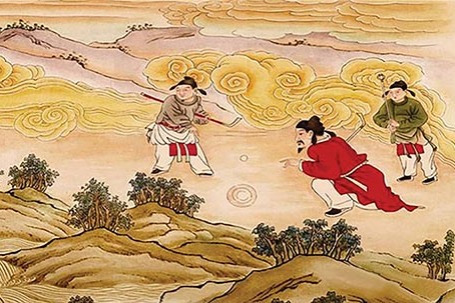BRICS thread runs through art display

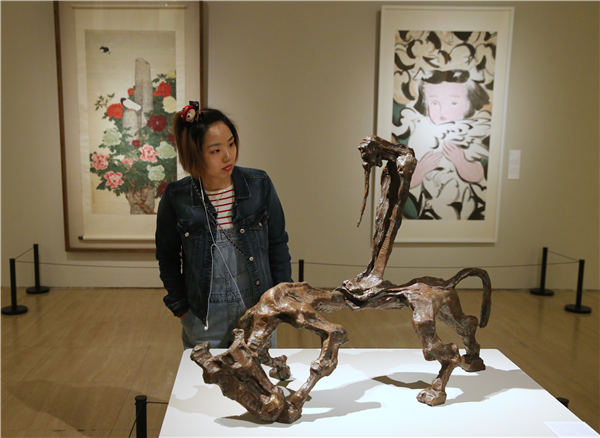
The late Indian landscape artist Bireswar Sen centered his creation on portraying the splendor of the Himalayas, although he approached it on a small scale. He composed a poem of colors by depicting the changing views of the mountain peaks, valleys and cascades of the mighty range in four seasons.
But he worked on a piece of paper that is no more than 10 centimeters in length and width.
When a collection of his miniature watercolors debuted at the National Art Museum of China in Beijing on April 12, the audience needed magnifying glasses to appreciate the Himalayan landscape that Sen hailed with dancing lines and rhythmic colors. The works are from the collection of the National Gallery of Modern Art in New Delhi.
Gallery head Adwaita Gadanayak says Sen's landscape artworks evoke a divine feeling for nature and that he often depicted a monk or a poet walking alone in the extensive mountains, which suggests his attempts to escape into a spiritual space from the chaos of the world and immerse himself in nature.
Gadanayak says that in India, people's thoughts are related to nature, as it is the universal root of all living on Earth, despite the differences in culture and history.
"As long as we connect our roots through artistic expressions, we can understand each other, ... and we can together face a common future, and stand up to the challenges," he says.
Gadanayak's words also define the motif of a current exhibition at the National Art Museum of China. Uniqueness and Convergence brings together 61 works of art, including Sen's landscapes, from several public and private collections in Brazil, Russia, India, China and South Africa, the BRICS members.
The ongoing exhibition runs through Sunday.
The National Art Museum of China is presenting its own collection of Chinese ink-and-water paintings by 20th century masters, such as Qi Baishi and Pan Tianshou.
Wu Weishan, director of the National Art Museum, says the paintings, which are themed on the lotus flower, represent an important symbol of visual arts in China, while the Mandarin pronunciation of lotus, he, is similar to that for the word "peace", and the flower is also a metaphor in Chinese culture for innocence and integrity. That is why the museum picked these works for the exhibition, although they have been shown several times in earlier decades.
For the local audience, the exhibition unveils the variety and dynamism of the creation of unfamiliar artists in the other four BRICS countries.
Collections from the Iziko Museums of South Africa, an institution comprising of 11 museums and galleries, celebrate the diverse ancient traditions of South Africa, for example, a stone engraved with an ostrich dated back 2,000 years ago is on show, says the museum group's CEO Rooksana Omar.
She says meanwhile, these cultural aspects have inspired modern artists, and several works on display show how they have revised motifs from archaic rock paintings in paintings and wood cuts.
A cultural diversity because of the melting of immigrants from across the world defines the works loaned from Brazil's National Museum of Fine Arts in Rio. It shows seven artists who are now active both at home and in the international art community. Their works explore not only the links between Brazil and the West but also the influence of Asian migrants.
Alexander Sedov, director-general of the State Museum of Oriental Art of Russia, says its collection of paintings and sculptures on show display a rising interest among Russian artists in Asian cultures in the 20th century.
If you go
9 am-5 pm, Mondays closed. 1 Wusi Dajie, Dongcheng district, Beijing. 010-6400-1476.


